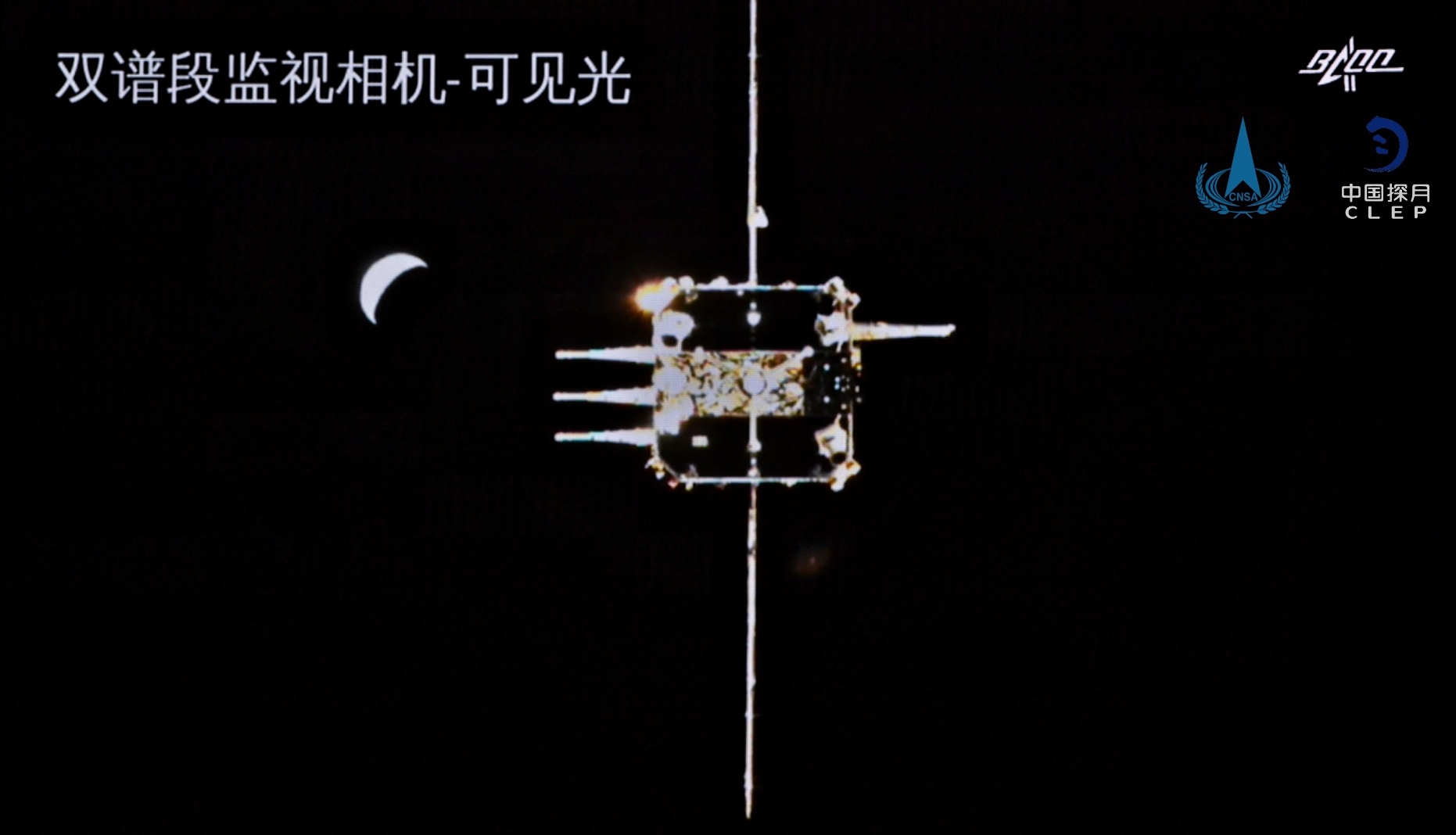Two robotic Chinese spacecraft have docked in lunar orbit for the first time ever, in preparation for sending samples from the Moon to Earth.
The lunar ascent module for China’s Chang’e-5 mission was captured by the metal claws of the mission’s orbiter at 5:42 a.m. Beijing time December 6th (2142 UTC December 5th), the China National Space Administration reported.
Over the half-hour that followed, a canister containing lunar material was safely transferred to the orbiter’s attached Earth-return capsule. In the days ahead, the ascent module will be jettisoned, and the orbiter will fire its thrusters to carry the return capsule back toward Earth.
If all proceeds according to plan, the orbiter will drop off the return capsule for its descent to Inner Mongolia sometime around December 16th, with the exact timing dependent on the mission team’s analysis of the required trajectory. That would mark the first return of fresh material from the Moon since the Soviet Luna 24 spacecraft accomplished the feat back in 1976.
The rendezvous marked the latest milestone in a historic mission that began less than two weeks ago with Chang’e-5’s launch. It took only a few days for the 8.2-metric-ton craft to reach lunar orbit, and a couple of days more to proceed with the descent of Chang’e-5’s lander and ascent module.
After a successful touchdown in a region known as Oceanus Procellarum, the lander used a drill as well as a robotic arm equipped with a scoop to dig up enough lunar regolith to fill a sample container in the ascent module. On December 3rd, the ascent module blasted off and headed for the orbital rendezvous.
Andrew Jones, a journalist based in Finland who’s been tracking every step of Chang’e-5’s mission, said in a tweet that the successful rendezvous and docking was a “massive step towards bringing home fresh lunar samples.”
The mission is significant not only for its technical successes, but for its scientific promise as well. The lunar landing site’s basaltic rocks are thought to have been formed 1.2 billion years ago, which is relatively recent in geological terms. Chang’e-5’s samples could be the youngest material ever brought back from the Moon – and they could thus shed new light on the geological evolution of the Earth-Moon system.
It’s been a big week for extraterrestrial sample return: In addition to Chang’e-5’s exploits, Japan’s Hayabusa 2 probe successfully dropped off samples from an asteroid at the end of a six-year round trip.
Lead image: Chang’e-5’s orbiter approaches the lunar ascent module for docking. Credit: CNSA / CLEP

